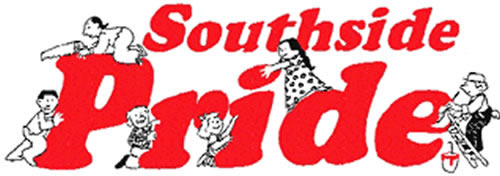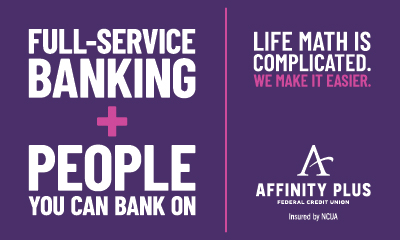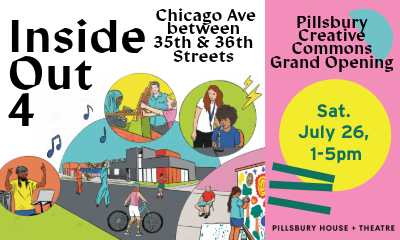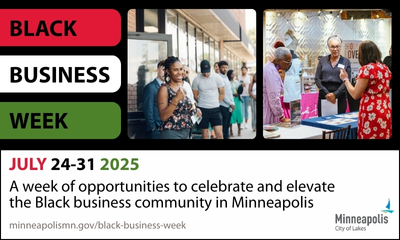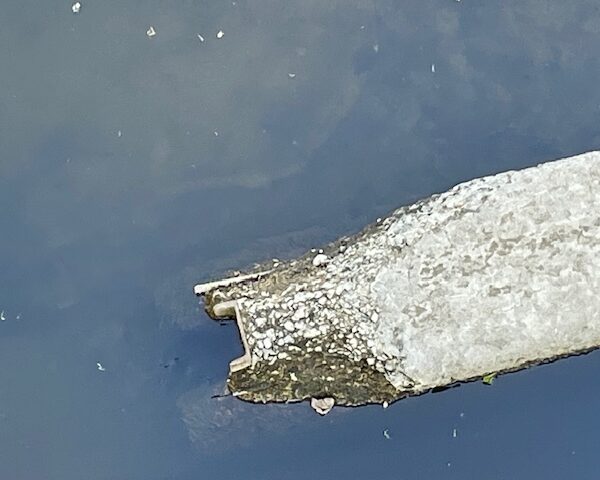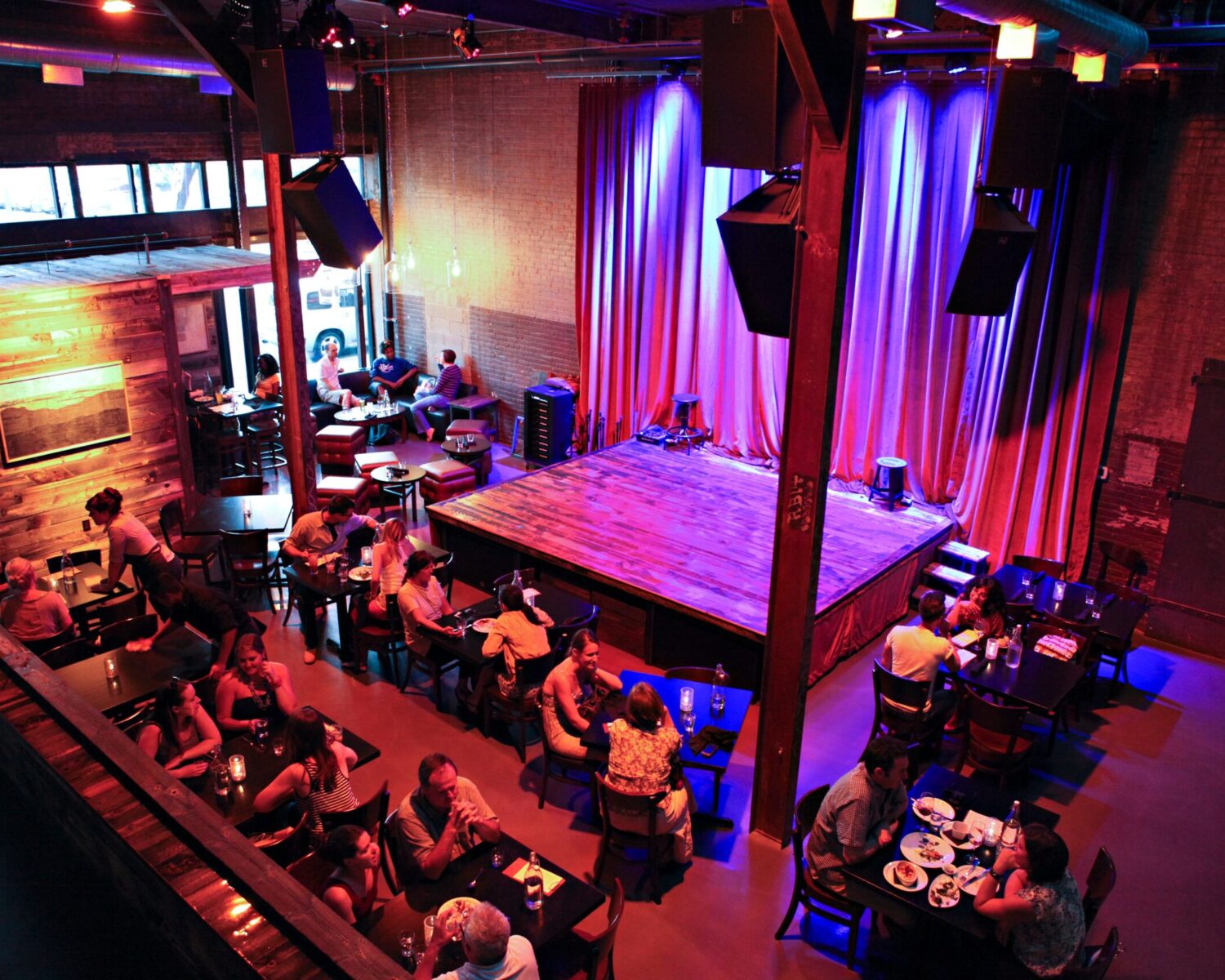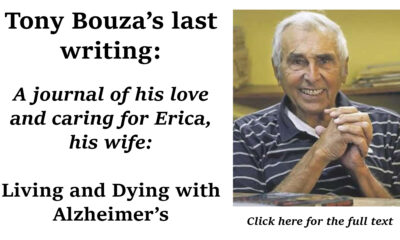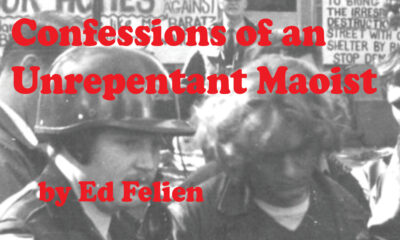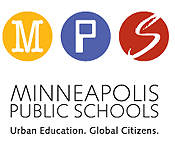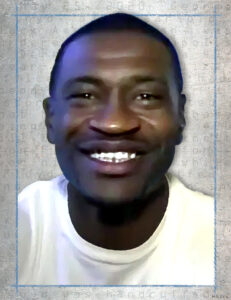 BY ED FELIEN
BY ED FELIEN
What’s happening at George Floyd Square?
Well, actually, not much.
George Floyd was murdered on Chicago Avenue at 38th Street almost five years ago. Since then, the city has sponsored many, many meetings (with free food) and taken surveys to determine how to commemorate the murder of George Floyd. They seemed almost ready to finally act when Council Member Jason Chavez upended one group’s conclusion by supporting another group’s plan for a pedestrian mall running a block long in all four directions from 38th and Chicago.
But, later, the pedestrian mall seemed dead on arrival when it was discovered that state law wouldn’t allow eliminating street parking unless more than 50 percent of the businesses affected supported it. Businesses on Chicago Avenue and on 38th Street want a return to normal as soon as possible. They do not want to eliminate parking and vehicular traffic in front of their businesses.
So, it seems, we are back to the drawing boards.
Everyone agrees we must preserve the iconic Power Fist that local artists built and placed in the center of the intersection at 38th and Chicago. What the artists did by placing the Fist in the center of the intersection was to create a roundabout. But this created traffic problems because the roundabout was not wide enough for buses to navigate. This meant detours and delays and five years of less traffic for local businesses.
A standard single-lane roundabout typically has a diameter of 66 feet. The width of Chicago Avenue is about 34 feet. We would need an additional 30 feet. Normally, that would mean taking fifteen feet from each of the four corners to widen the street, but we wouldn’t want to disturb the site at which George Floyd was murdered, and the southeast corner is already fully developed. The southwest corner is the parking lot for Worldwide Outreach for Christ, and the northwest corner is the former Speedway parking lot. The city should purchase through negotiation or eminent domain a fifteen feet radius of the Outreach parking lot, and, since the city already owns the former Speedway lot, there should be no problem ceding a fifteen foot radius of that parking lot for the roundabout.
This would place the center of the roundabout about fifteen feet further west. It would be unique as a roundabout because it would be off-center. Given the meaning of the Power Fist (to disturb the status quo), this would complement the intent of the monument.
The former Speedway site should be sold to Hennepin County, and the county should build a satellite service center there to distribute food stamps and welfare benefits.
The city or some private non-profit corporation (or a group of non-profits led by the Floyd Family Center) should purchase the Cup Foods/Unity Foods building that was the scene of Floyd’s murder. We have mourned the unfair and untimely death of George Floyd for almost five years, perhaps it’s time now to celebrate his life. He worked security for local night clubs because he liked good food and good music. To honor that memory, we should have a place that spreads joy.
How about a barbeque joint with the best ribs in town?
You walk through the new entrance of George Floyd’s Rib Joint on Chicago Avenue, right at the place he was killed, and the first thing you see is a smiling, floor to ceiling, portrait of George Floyd. He’s still working security. You’re given souvenir menus that tell the story of George Floyd and tempt you with Texas ribs and Minnesota coleslaw and potato salad.
He grew up in Houston, Texas, so he must have heard of Goldee’s Barbeque — a Black-owned barbeque restaurant in Fort Worth. They just won the Bib Gourmand award from the Michelin Guide for “great food at a great value.” They have consistently been recognized as the best barbeque in Texas by the Texas Monthly. We need to study their methods, and we need to study their sauce.
Something like that would make George Floyd proud.
Jason Chavez responds:
“There isn’t support on the City Council to approve the mayor’s concept plan. This doesn’t mean we should delay the project all together. On Dec. 5th, 2024, we passed a resolution expressing our support for the pedestrian plaza concept layout. We will continue to pursue this route.
“It’s factually incorrect to say that a pedestrian concept plan is dead on arrival per state law. There is a pathway to make this happen and we will continue to pursue this route on the City Council.
“Unfortunately, the Mayor’s veto will only slow down progress and cause further delays into the future of George Floyd Square. Let’s honor the lives we’ve lost to police violence and get this right the first time.”
Jason Chavez found the nine votes to override Frey’s veto at the Feb. 27 council meeting, and the plan for a pedestrian mall at George Floyd Square stays alive.
Michael Kehoe:
“The CURA survey of 6,000 residents of the four neighborhoods had findings that will not be swept under the rug. The two most important findings are:
1) 70 percent of the respondents want Chicago Avenue and 38th Street to be restored to the state it was in before George Floyd was murdered. They want the streets fully restored without any roundabouts or bump-outs. This is the clear opinion of these survey respondents.
2) 74 percent of the African Americans surveyed do not believe the spot on the street where George Floyd died is ‘sacred ground.’ They don’t believe it. What is sacred to one person may not be sacred to another.
All of this frustration can be avoided by simply accepting what the residents have said and move the location for a George Floyd memorial over to the Peoples’ Way site. It’s a perfect and logical solution and one where everybody wins.”
The Conflicts at 38th and Chicago: The George Floyd Memorial vs the 38th Street Thrive Plan
BY TOM ABELES
The “Great Migration” is the saga of the movement of the southern black community seeking economic opportunities. The movement into Minnesota started post WWII, with the black population heading to North Minneapolis. A thriving community developed in South Minneapolis, along 4th Avenue between 34th and 46th street and intersected with 38th street, a major east/west transit route. Development along 38th between Nicollet and Bloomington over time seemed possible, until the development of Interstate 35W split Nicollet and areas west from the development east along 38th street. This was both a physical divide, as well as severing and diverting the more affluent areas from the east. Most development was at the intersections, with Chicago Avenue seen as a critical node because it provided the gateway north to downtown Minneapolis and south to the Mall of America. The importance of that intersection was emphasized by the fact that Metro Transit added extra sections during rush hours between the intersection and downtown Minneapolis. While most development along 38th was at nodes such as Bloomington and Cedar, Chicago served as a key transfer hub with a gas station and a small grocery.
38th Street Thrive
While there was a vital black community developing at 4th Avenue and 38th Street, the civil rights movements during the ‘60s hoped for opportunities within the black community. The ‘70s saw the deterioration of housing, increased crime and drug traffic and a lack of opportunities that changed the future of the community along two axes. First, there was a reverse of the “Great Migration” with many returning to their roots in the South — such as Atlanta, Georgia and cities in North Carolina. The second was the easing of mobility in the U.S. which sent families toward the suburbs. Loss of families saw the closing of the local elementary school, Bryant Junior High in 1979, and in 1982 an anchor, Central High School. Sabathani Community Center which provides support and social services was founded in 1966 and moved into the former Bryant Junior High building in 1979.
The 38th Street Thrive concept plan was published in 2021. Its specific aim was to revitalize and reconceive what was a black community that was centered at 38th Street and 4th Avenue, and extended between Nicollet and 10th Avenue. What was not taken fully into account was the severing of the street by Interstate 35W, which effectively directed the more affluent end of 38th from Nicollet toward the west.
In 2015, the Seward Cooperative opened its second store, the Friendship Store, at 38th Street and 4th Avenue. The focus was on organic, natural and similar products which served its 2,000+ members located in the Bryant area with discount concessions to the lower income community, including hiring people of color (POC). While the city published census statistics, it did not identify critical population shifts. For example, publications such as Southside Pride tracks the development of entertainment and related business at the street level. It noted that the growing enterprises along 38th are attracting members of the POC community as both entrepreneurs and customers, displacing opportunities for the black community remaining after the diaspora to the outer suburbs or returning to the South. Other statistics indicated that the housing market is attracting a significant number of households with incomes that range from $75,000-$100,000+ (such as the clients for the Seward Friendship Store).
Across from the Seward Coop is Sabathani, which provides social, health and welfare services for youths, immigrants and others who qualify for low-income assistance. It is investing over $10 million to expand and refurbish its facility and developing subsidized apartments. Additionally, there are plans for new and extant organizations focused on similar facilities. These include Kente Circle, Cultural Wellness Center, South Side Community Health Services, Agape Movement, and The Aliveness Project. All are anticipating a growing community demand for these services. Additionally, the black community developing along Chicago — particularly at the intersection of Chicago Ave and 38th Street — has as its underlying platform the development of similar services (e.g. racial justice and healing) using the expanded concept of memorializing the death of George Floyd.
38th Street is one of seven “cultural districts” in Minneapolis which runs from Nicollet to Cedar. 38th Street Thrive was envisioned to revitalize a strong black community that had essentially died, as the Great Migration returned South to increasingly vibrant and developing urban areas. The top-down design by the city, largely focused on infrastructure, was and is ill equipped to comprehend the increased complexity of the singular community in a select portion of the
cultural district, which has been made significantly more complex with the death of George Floyd at the 38th Street and Chicago intersection. Thus, the small section of the 38th Street cultural district, 38th Street Thrive, is blocked by Interstate 35W at the west and the potential to block the development east and north/south along Chicago with the sealing of Chicago Avenue by the development of the memorial, “George Floyd Square”, at the intersection.
The George Floyd Memorial/38th Street and Chicago Avenue
In May of 2020, CUP Foods — at the intersection of Chicago Ave and 38th Street — called the Minneapolis police to arrest George Floyd for attempting to pass a counterfeit bill. The attempted arrest resulted in Floyd’s death at the hands of the police department. The publishing of that encounter set off destructive riots in both Minneapolis and St. Paul, MN. The 38th and Chicago intersection received no significant damage. The idea of a memorial at the site morphed into the possibility of a larger development and an effort on the department of public works to explore possible options in conjunction with the area residents. This expansion was to include the building and property of the former Speedway gas station and minimart. The expansion was between 37th and 39th street, along Chicago Avenue.
In 2015 the new, strong mayor City Charter was adopted, which was to define the separation of — and the rules and responsibilities of — the departments under the mayor and that of the City Council. In the case of the development of the 38th and Chicago intersection, it was supposed to avoid conflict and clarify the responsibilities of the mayor’s departments and those of the council. Under the new Charter, the mayor and staff could expect that an acceptable plan would be in place today, well before the elapse of 5 years since the death of George Floyd.
The issue became complex when a black advisory committee to the city resigned and reconstituted itself as the Community Visioning Committee (CVC) and proceeded to develop a plan to include the former gas station and minimart. The concept morphed — and in fact, buried — the idea of a memorial into programs to respond to their understanding of the need to heal past injustices to the larger black community.
At that time, the mayor’s team had issued a request for qualifications for a developer to create a design for the site, now called “George Floyd Square”, and assume the fiscal and technical responsibility for management. In community discussions, it was clear that the city, or public entities, would not have fiscal or legal liabilities which were to remain with the developer. When the official request for qualifications was released, the extensive requirements reflected the ideas which were conceived by the CVC and its former advice to the city. It did not reflect the citizen input through many meetings or a formal study by the University of Minnesota’s Center for Urban and Rural Affairs.
After the deadline for submissions had passed, the CVC — through a submission to the City Council — requested that the process be halted until it could submit a separate proposal in about 6 months. Based on this request, the mayor’s managers stopped its planning efforts. This circumvention appears to violate the separation of functions between the mayor’s office and the City Council under the new City Charter. It was executed without sufficient data and study from the CVC, and has no base for such action by the City Council. It disregarded the consensus of the larger community’s sense of community needs.
Additionally, it raises issues which the adoption of the new City Charter was to resolve:
- The underlying issue is that the CVC has enrobed itself with the authority as a surrogate for the history of the black community, a community that does not exist today as has been identified in the analysis of the city’s 38th Street Thrive effort. In fact, the analysis by the black community itself — with the reversal of the “Great Migration” of blacks from the South to the North and a return to the South — indicates that the needs of the black community with improved education and economic power are substantively different.
- As the black community in Minnesota move into the suburbs, get elected to office, as well as expand business development, there shows a shift. As the newly arriving POC’s — including new arrivals from Africa — have shown, the efforts proposed by the CVC have much in common with a Southern revival meeting. The rhetoric may be aimed at a past that was, and not a future that will be.
The abandoned site of the former gas station included a building. Parts of the property have been gathering places for parties interested in supporting a “black lives” community. The city acquired the property and had issued a request proposal for a developer. During community discussions it was clear that the city would provide the site to a qualified developer of which the city would not be a partner.
This was to require a developer with substantial assets to plan, develop and manage the site. Unfortunately, much of the specifications for the site developer were drawn from plans of the CVC. The city selected four for public comment. These parties and the CVC, at best would qualify for the typical consultants who were depending on being contracted and underwritten by government or granting agencies.
Lessons Learned
- The City Council does not have the time, internal expertise or technical and fiscal support to analyze, develop, or approve projects. That should rest with the departments under the mayor’s responsibility. The problems with the green field development of the Upper Harbor’s land, the unvalidated real cost for a pedestrian mall on Chicago Avenue, and the faulty analysis of the development of 38th Street — now called 38th Street Thrive — all point to the underlying efforts of the City Council, who have different functions and capabilities that require a different working relationship between the mayor’s office and the City Council.
- The 4 teams that submitted their qualifications to develop 38th and Chicago — including the former Speedway site — have not provided sufficient evidence that they have the fiscal, technical or management skills, nor have they made clear that they have such access. Thus, there is a 5th alternative — reject all proposals. There are sufficient resources that the city can access to move to a resolution and execution of a plan to move the development forward in a prudent, professional and timely fashion — one which address the defined needs articulated by the larger community
- The CVC needs to validate the needs of the black community within the context of the shifting economic and social needs of the larger BIPOC community, and the developing shifts of this population across the city
- The plans being lobbied by the CVC may be perilously close to voiding any attempt to receive a tax-exempt classification.

